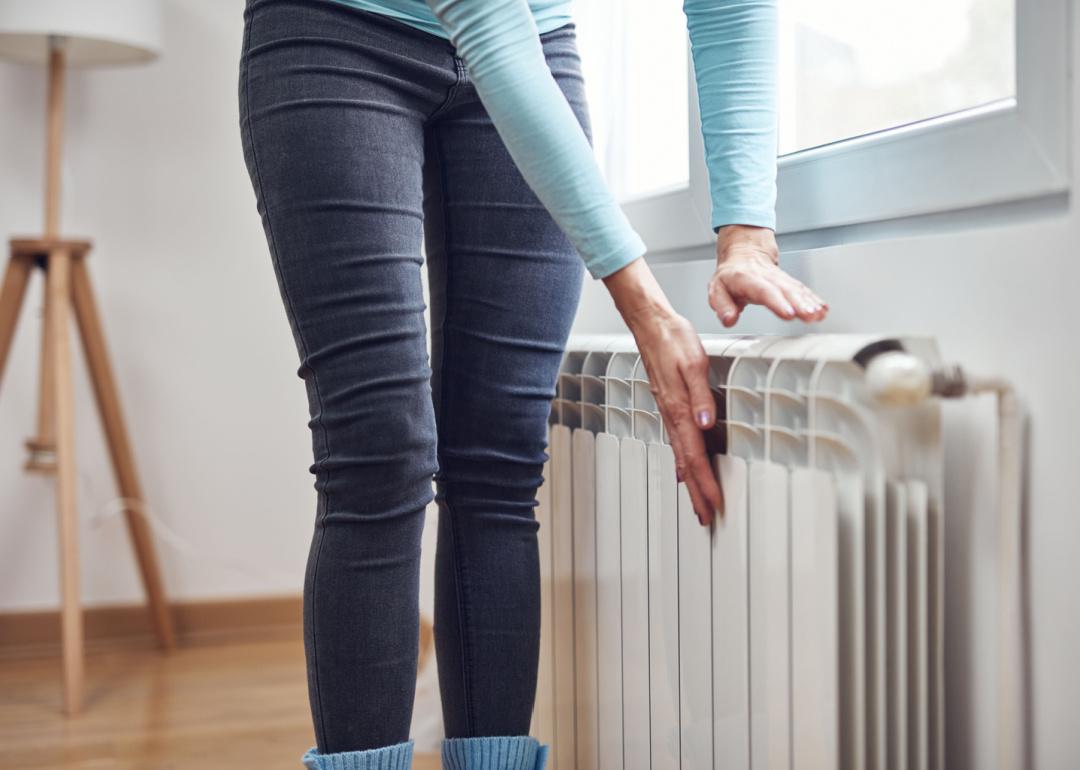
8 ways to effectively winterize your home on a budget
This story originally appeared on American Home Shield and was produced and distributed in partnership with Stacker Studio.
8 ways to effectively winterize your home on a budget
When winter hits, everything isn't always picture-book glistening snow and icicles. The situation can be much more serious than spending extra time digging out your car and scraping the ice from the windows.
What starts as gently swirling snowflakes can quickly snowball, so to speak. Snow drifts piling up can damage your roof and rain gutters, freezing temps can cause pipes to burst, and meltwater can flood your basement and garage. Winter storms have already cost Americans $3.6 billion in damages and losses in 2024, according to the National Centers for Environmental Information—that's double the $1.8 billion incurred in the entire winter season of 2023.
There are effective ways to help keep your home warm without cutting too deeply into your cocoa and marshmallow funds. American Home Shield compiled a list of eight common ways to winterize your home for little or no cost, from basic weather strips to smart temperature controls.
Take a little time to follow these tips for winterizing your home on a budget so you can stay cozy while the snow falls outside.

Programmable thermostat
You don't keep your car idling all day just so it's ready to use in the evening. But if you leave home during the day with the heat turned up, you're effectively doing the same thing. Programmable thermostats let you create a schedule for when the heat is turned on in your home and adjust the ideal temperature throughout the day.
Fancier versions may allow you to change the temperature from your phone, but a simple $20 programmable thermostat will do the trick. Tell it what times you're home and when you're away, and it will let your home cool off a bit to save energy and money when you're not there, warming things up in plenty of time for your return.
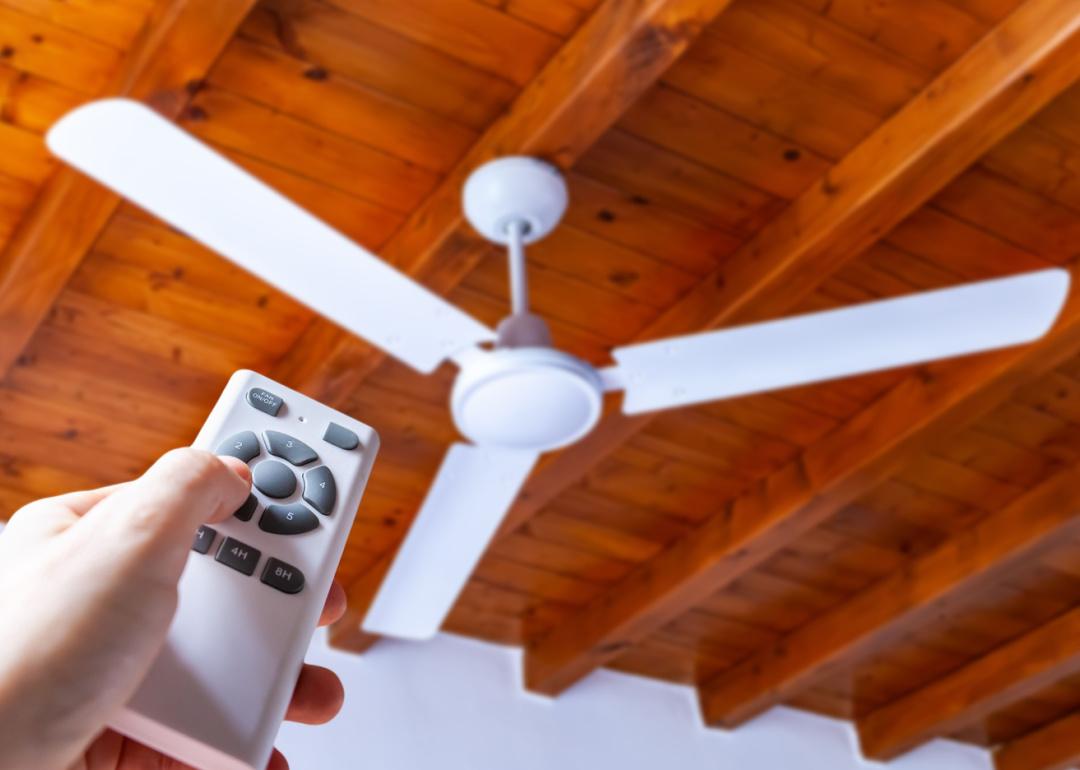
Switch your fan to spin clockwise
One of the first things any youngster in a science class learns is that hot air rises and cold air sinks. As it turns out, that handy bit of scientific knowledge can also help regulate your home's temperature.
Many ceiling fans have a small switch that allows you to change the direction in which the blades turn. By flipping that switch, you can change your fan from spinning counter-clockwise—bringing cold air to the ceiling and spreading it around—to clockwise, bringing warm air from the ceiling down to the floor.
This single change could allow you to drop your thermostat setting by three to five degrees. While the improvement you see will more likely depend on how big your home is, how effective your heating unit is, and how much of that heat stays in the house, the change can help—and it's free.
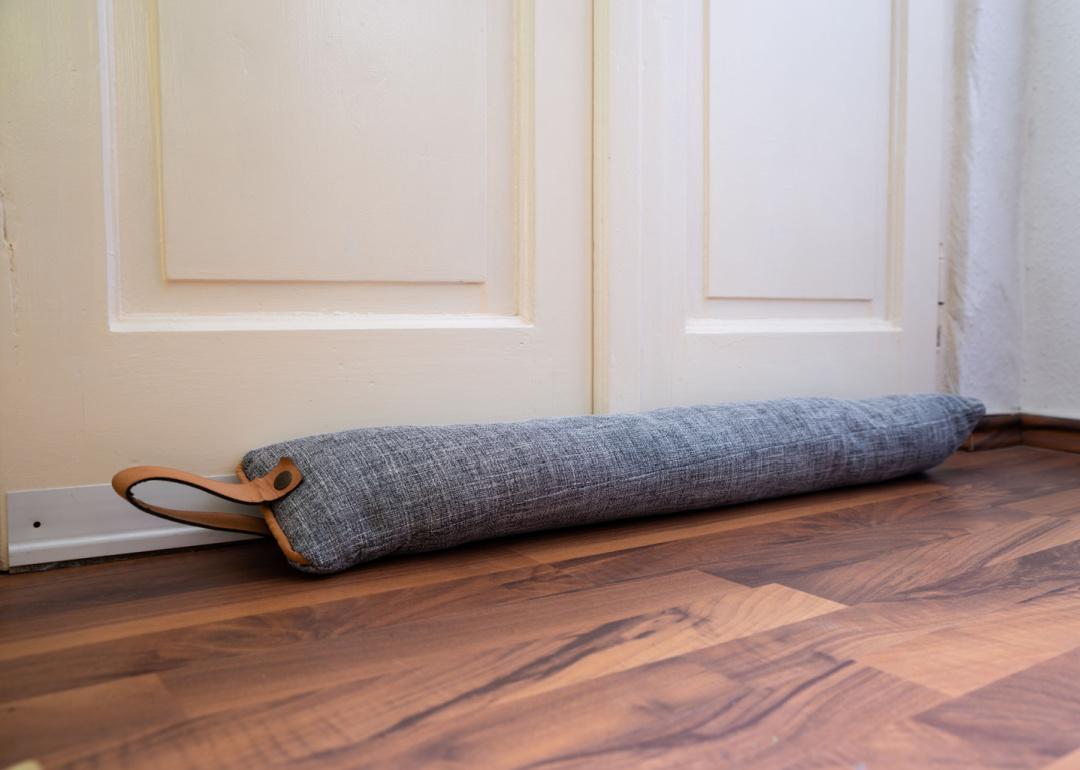
Seal your doors
Any small openings that let the heat out of a house represent a significant amount of heat loss and wasted money. Doors, in particular, are notorious for letting heat escape.
To winterize your doors, start by tightening the hinges and checking for any cracks in the door frame that might let the warm air escape. Use caulk to seal what you find.
You can also add something to the bottom of the door to stop drafts. Inexpensive options include a door sweep, which attaches to one side and has a flexible piece that hangs below the bottom of the door; a double draft stopper, which slides under the bottom of the door and has cushions on either side; or a door sock, a roll of fabric that is placed along the bottom of the door. For a bang for your buck, you can make a door sock by rolling up a towel.
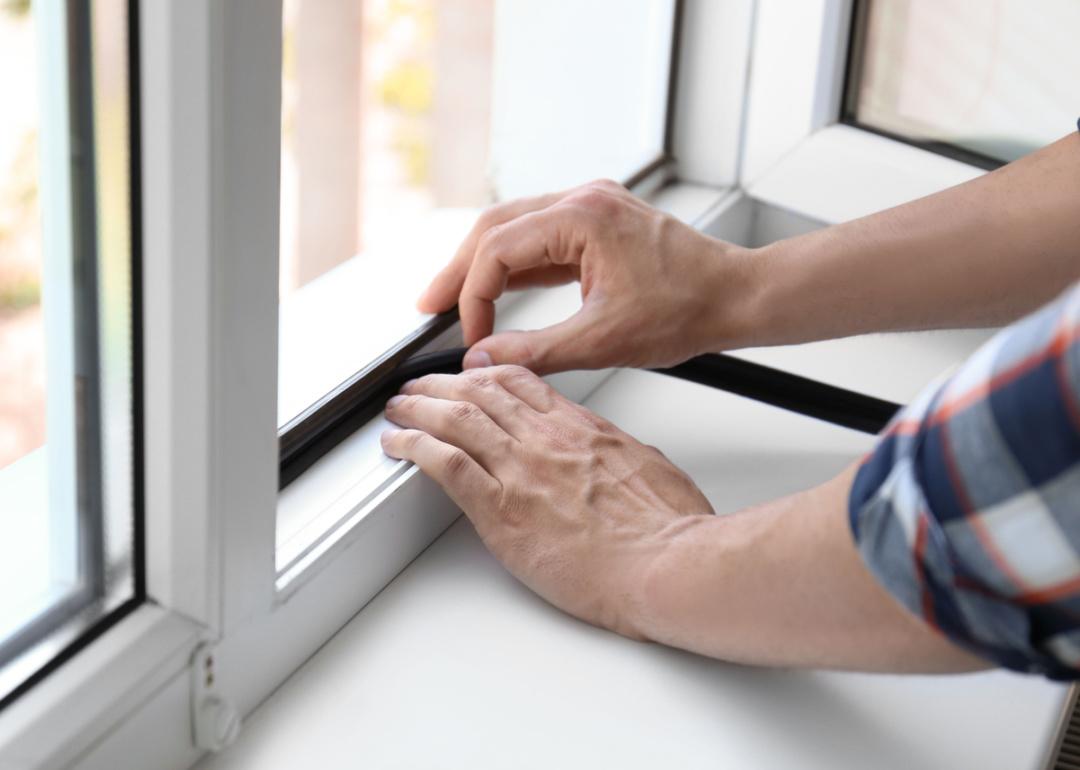
Weather stripping
The next time you open the refrigerator, notice where the door closes onto the fridge. There's a strip of flexible plastic to keep the cold inside and maximize efficiency.
You can use the same concept to keep the cold out of your home. Weather stripping, which comes in different shapes, can be cut and folded to fill spaces around windows and doors, even on a garage door. There are special gaskets for electrical outlets, too.
One creative way to look for drafts is to carry a lit stick of incense and see if the trail of smoke is disturbed near the window or door.

Plastic over windows
If you're serious about keeping the cold out, consider sealing entire windows with plastic. One report suggests that heat leaking from your windows could add up to as much as 30% of your home's heating bill.
Instead of trying to block drafts here and there, window sealing takes care of everything in one big action. In chillier parts of the world, where temperatures can stay below freezing for months, people know they won't open their windows for quite some time.
If that describes your climate, consider products that provide insulated plastic to cover your windows. The clear plastic lets light in while blocking drafts.
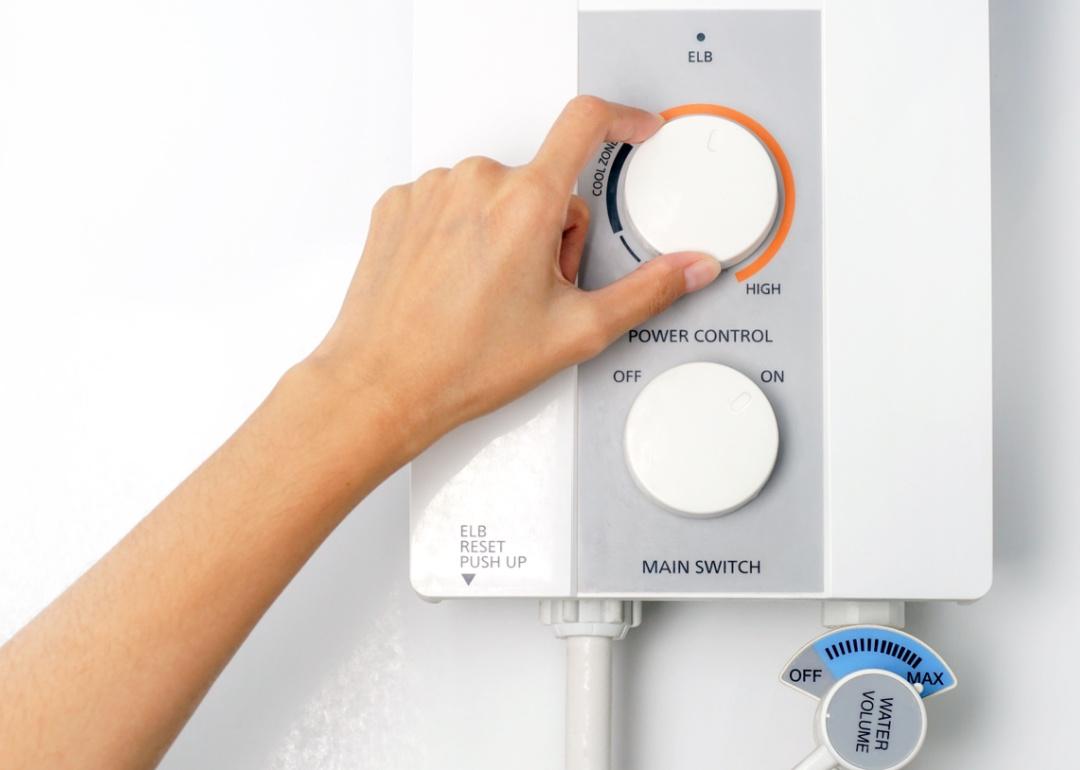
Water heater insulation and settings
Few experiences are as enjoyable as a nice, hot shower on a chilly morning. Your water heater keeps you warm and comfy—consider returning the favor with an insulated jacket.
Insulating your water heater can save you 7-16% in water heating costs, according to the Department of Energy. Because these insulators are relatively cheap, they may pay for themselves in just a year.
Also, consider turning down the temperature. Many units have a default setting of 140 degrees, but many homes are just fine with a setting of 120.
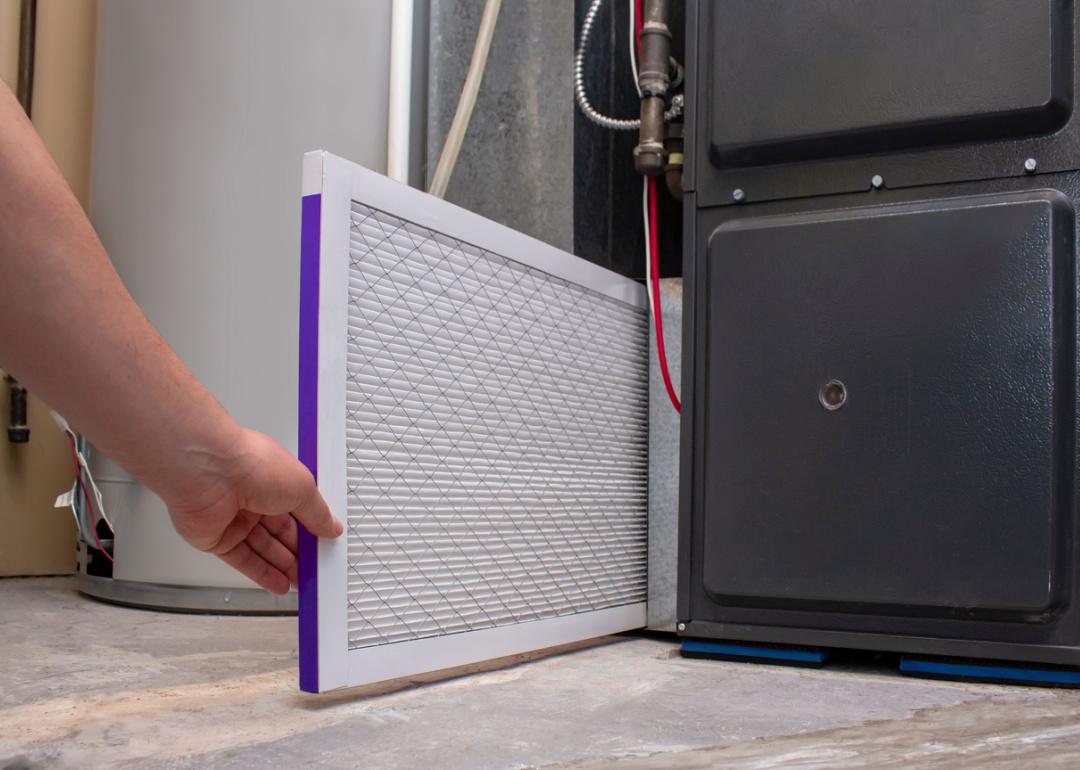
Change your air filters
Beyond keeping cold air out and warm air in, you can save even more on your heating bills by making your existing equipment more efficient.
Furnaces and air-handling units have air filters, which clean the air before it is heated and distributed throughout the house. The dirtier these filters are, the harder the air handler has to work to suck in air and warm it up.
Check your manual for specific guidance. Some sources suggest air filters should be changed every three months and sometimes as frequently as every month.
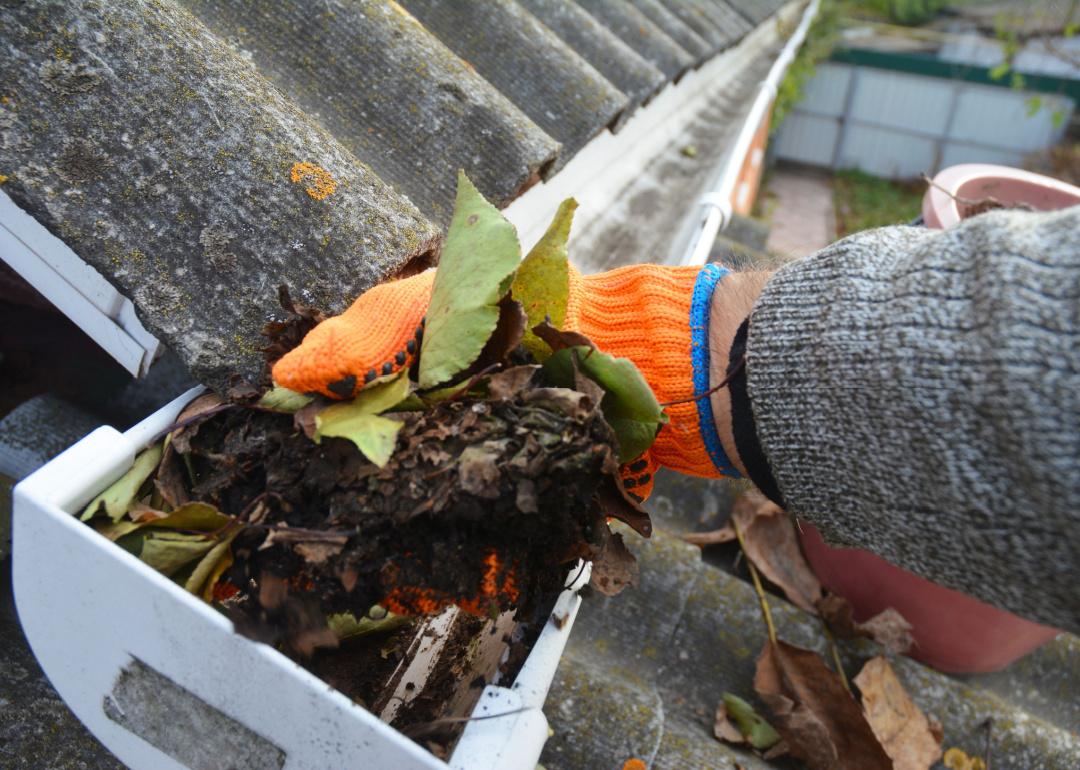
Clean your gutters
If you have gutters on your house, consider adding the unenviable chore of cleaning your gutters to your fall to-do list. It won't cut your heating bill, but it's an inexpensive way to save yourself a serious headache and some major expenses—and is a core part of winterization.
Leaves trapped in your gutters can collect water and clog the downspouts, which are supposed to direct water away from the house. Gutters clogged with leaves overflow and send water spilling down along your foundation.
When that water starts to freeze, that mild annoyance can become a serious problem. The added weight from that ice can damage gutters, potentially leading to a costly repair or replacement. And the ice can back up under the roof's shingles, starting leaks in your ceilings.



